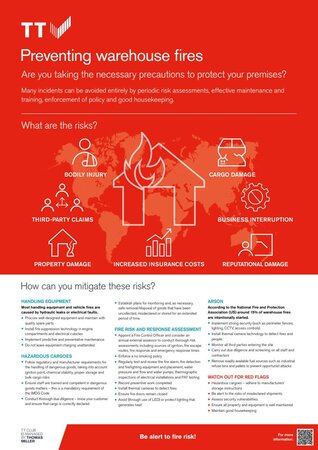Know the risks around cargo storage.
In a world engaged in moving cargoes from one place to another, it is easy to spend time focused on what is being moved and the risks involved in transit. Inevitably, there will be multiple places where the goods will ‘rest’, either as an interface between different modes of transport or for other trade needs.
This page looks at the risks of storing cargo from dangerous goods to theft, to weather risks, to abandonment of cargo. We will be releasing a new series of TT brief documents that will look at warehouse safety, security, flooding risk and fire risk.
Contact us
TT Brief: warehousing series
Warehousing White Paper and Checklist
Safety Guidance for Dangerous Goods Storage and Handling Facilities produced by ICHCA International, IVODGA, National Cargo Bureau and World Shipping Council.











